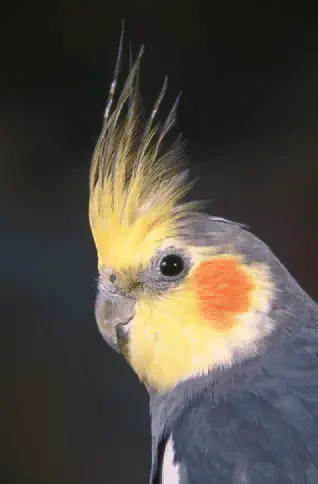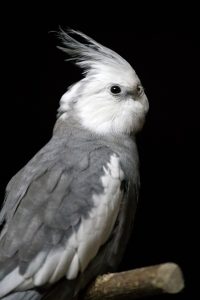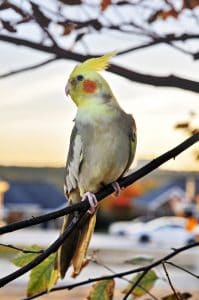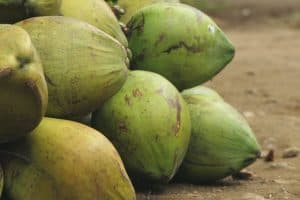As a devoted bird enthusiast, I’ve always been captivated by the charm and intelligence of cockatiels. These feathered friends bring joy and companionship to many homes, but like all pets, they’re susceptible to a range of health issues. Understanding what are your cockatiels possible health problems is crucial for any owner who wants to ensure their pet lives a long, happy life.
From respiratory infections to nutritional deficiencies, the health challenges these birds face can be daunting. I’ll dive into what symptoms to watch for and how to prevent common ailments, arming you with the knowledge needed to keep your cockatiel thriving. Whether you’re a seasoned bird keeper or considering adopting your first cockatiel, recognizing these potential health issues is key to providing the best care.
What Are Your Cockatiel’s Possible Health Problems?
Recognizing the common health issues in cockatiels is crucial for bird owners to ensure the timely treatment and care of their pets. Now, let’s delve into some specific ailments that these charming birds might face.
Respiratory Issues
Cockatiels often suffer from respiratory infections, which manifest as breathing difficulties, wheezing, or tail bobbing while breathing. Causes include bacterial infections, viral infections such as Psittacosis (often referred to as parrot fever), and fungal infections. If you notice any signs of respiratory distress, consulting an avian veterinarian is vital. They can provide specialized care that might include antibiotics or antifungals, depending on the diagnosis.
Skin and Feather Disorders
Skin and feather disorders in cockatiels can range from feather plucking to bacterial skin infections. Poor nutrition often contributes to these conditions, especially in birds maintained on an all seed diet, which lacks variety and essential nutrients.
Symptoms like bleeding feathers, feather picking, or general changes in the appearance of the bird’s feathers often alert bird owners to underlying health issues. Treatment for these disorders should be guided by an avian vet, who might suggest dietary changes or environmental improvements.

Digestive Complications
Cockatiels may experience digestive issues which often arise from an improper diet or the ingestion of inedible objects. Signs to watch for include changes in droppings, vomiting, or the presence of undigested food in their stools, indicating avian gastric yeast or other digestive tract problems. A vet might recommend dietary alterations, supplements, or medication depending on the cause. Regular monitoring of the bird eating habits and stool quality helps prevent long-term complications.
Behavioral Disturbances
Behavioral disturbances in cockatiels, such effectively managing, it may result in excessive egg laying or aggression. Stress, boredom, or underlying illnesses often trigger these behaviors. Providing a stimulating environment with plenty of toys, interaction, and appropriate feeding can curtail behavioral issues, alongside vet-recommended strategies if health problems are the root cause.
Each of these health issues can profoundly impact a cockatiel’s quality of life. Therefore, maintaining regular veterinary check-ups and observing any changes in behavior or physical health plays a crucial role in preserving their well-being.
Preventive Measures and Daily Care
Maintaining the health and vitality of pet cockatiels involves several crucial daily care strategies. This segment will discuss how proper diet, clean habitats, and regular exercise not only prevent common health issues but also enhance your cockatiel’s quality of life.
Proper Diet and Nutrition
A balanced diet is essential for avoiding nutrition-related illnesses in cockatiels such as fatty liver disease and deficiencies that can lead to weakened immune systems. Cockatiels benefit from a variety of foods, including:
- Pellets: These should constitute about 60-70% of their diet, as pellets are specially formulated to provide a well-rounded intake of nutrients.
- Vegetables and Fruits: Adding chopped dark leafy greens, carrots, and apples helps ensure that they receive necessary vitamins and minerals.
- Seeds and Grains: While millet seeds can be a good treat, reliance on an all-seed diet can lead to health problems, making seeds no more than 10% of the total diet.
It’s imperative to provide fresh water daily and avoid foods known to be harmful like chocolate, caffeine, and avocado.
Importance of a Clean Habitat
Keeping your cockatiel’s habitat clean is critical to preventing bacterial infections and parasitic infestations that can severely impact their health. Here’s how I manage a clean environment for my pet birds:
- Regular Cleaning: I clean the cage daily to remove food waste and droppings, and disinfect it thoroughly once a week.
- Proper Ventilation: Ensuring that the living area is well-ventilated reduces the risk of respiratory diseases, crucial for maintaining healthy lung function.
- Safe and Non-Toxic Materials: All materials within the cage, including toys and perches, must be safe and non-toxic to prevent any risks of poisoning or injury.
Regular Exercise and Enrichment
Cockatiels are active birds requiring physical and mental stimulation to stay healthy and happy. Here are some techniques I use:
- Flight Time: Providing safe, supervised time outside the cage each day allows for necessary exercise and helps prevent behavioral issues like feather plucking.
- Interactive Toys: Puzzle toys that encourage foraging can prevent boredom and stimulate their minds.
- Social Interaction: Regular, gentle interaction with humans or other birds can help maintain their social health, provided all animals are healthy and well-introduced to prevent stress or aggression.
Regular visits to an avian veterinarian also play a vital role in preventive measures, ensuring that any signs of illness are addressed promptly and appropriately.
Recognizing Signs of Illness
Recognizing signs of illness in cockatiels is crucial for their health and well-being. As a part of my ongoing commitment to pet bird care, I’ll detail key symptoms that may indicate your bird is unwell.
Physical Symptoms to Watch For
Cockatiels often hide their pain. However, some physical symptoms are apparent and require immediate attention from an avian veterinarian:
Ruffled feathers: Birds that keep their feathers fluffed for extended periods typically struggle with their health.
Discharge: Any discharge from the eyes, nose, or beak points to possible infections.
Breathing Issues: Signs like wheezing, coughing, or tail bobbing while breathing suggest respiratory infections, a common issue among pet birds.
Changes in Droppings: Watch for changes in color, consistency, or frequency. Unusual droppings often indicate digestive problems.
Weight Loss or Poor Condition: If a bird’s keel bone (the bone that runs down the center of a bird’s chest) becomes prominent and it’s easy to feel, it might be losing weight.
Feather Problems: Feather plucking or significant changes in the condition of feathers can signal stress or nutritional deficiencies, such as an all-seed diet which is not balanced.
If you notice any of these clinical signs, consulting with an avian vet immediately can make a significant difference in your cockatiel’s health.
Behavioral Changes
Behavioral changes can also indicate health problems in cockatiels. Monitor your pet’s behavior closely, especially if it deviates from its usual patterns:
Reduced Activity: A sick bird may become less active or show difficulty in flying due to energy loss or respiratory system issues.
Aggression or Withdrawal: Sudden aggression or a shift towards withdrawal might suggest discomfort or pain.
Vocal Changes: Any changes in vocalization—either increased noise or unusually quiet periods—can be a sign of stress or illness.
Appetite Changes: A noticeable increase or decrease in eating can often indicate health issues, particularly if your cockatiel’s diet suddenly does not satisfy them anymore.
Repetitive Movements: Repetitive activities or over-grooming might point to psychological distress or physical discomfort.
It’s essential to observe these behavioral signs and act accordingly, ensuring your cockatiel receives appropriate care from a specialist.
By keeping an eye on these behavioral and physical cues, I ensure that any potential health issues in my cockatiels can be addressed promptly. Regular check-ups with an avian veterinarian are advisable to maintain your pet’s health at its best.
Treatment Options for Common Diseases
When cockatiels face health problems, understanding and applying the appropriate treatments can make a significant difference in their recovery and quality of life. Addressing these treatment options encompasses both veterinary interventions and effective home care approaches.
Veterinary Interventions
Upon noticing signs of illness in cockatiels, it’s imperative to consult an avian veterinarian. These experts can pinpoint the specific illness—be it respiratory infections, liver disease, or bacterial infections—and administer the necessary treatments. Here, I’ll outline the common diseases and the relevant medical responses:
- Respiratory Infections: Typically treated with antibiotics prescribed by the avian vet, it’s critical to complete the full course even if the bird shows improvement.
- Liver Disease: Often a result of an all seed diet, treatment may involve dietary adjustments supplemented by medications to support liver function.
- Bacterial Infections: These require targeted antibacterial therapy to prevent secondary infections which could further harm the bird’s health.
- Fungal Infections: Antifungal medications are crucial, given the severity and rapid progression of fungal diseases in avian species.
For conditions like egg binding, which is common in female cockatiels, immediate veterinary intervention is necessary, as this condition can become life-threatening quickly.
Home Care Tips
Effective home care strategies complement veterinary treatments and can aid in the faster recovery and overall health of cockatiels. Here are several tips I recommend:
- Nutritional Support: Ensuring a balanced diet that goes beyond just millet seeds or an all-seed diet can bolster a cockatiel’s immune system, vital for recovery.
- Clean and Safe Habitat: Regularly cleaning the bird’s habitat and keeping it free from drafts and pollutants helps prevent respiratory illnesses.
- Stress Reduction: Keeping the cockatiel in a calm environment and minimizing stressors plays a crucial role in improving its response to treatment and overall health.
- Observation: Carefully observing the bird for any worsening symptoms or signs of distress and reporting these to the avian vet can help adjust the treatment plan as needed.
Adhering to these care guidelines helps ensure that the treatment plans prescribed by avian veterinarians have the best chance of succeeding, facilitating a swift recovery for the pet cockatiels.
Recognizing and addressing the health issues of cockatiels are crucial steps to ensuring their well-being. As a pet owner, I’ve learned the importance of staying vigilant about the signs of illness and the benefits of prompt and appropriate veterinary care. By integrating preventive measures and closely monitoring their health, I can help my cockatiel lead a happier, healthier life. Remember, a proactive approach can make all the difference in managing your bird’s health effectively.
Frequently Asked Questions
How do I know if my cockatiel is sick?
A sick cockatiel may exhibit signs like sneezing, coughing, breathing difficulties, change in poop appearance, lethargy, or reduced singing and talking. Unusual feather plucking or loss and any change in eating or drinking habits should also be noted. If these symptoms are observed, consult an avian veterinarian promptly.
What should I do if I notice symptoms of illness in my cockatiel?
If you observe any symptoms of illness, isolate your cockatiel from other birds to prevent potential spread of disease. Provide a warm, stress-free environment and ensure they have access to fresh food and water. Immediately schedule a consultation with an avian veterinarian to get a proper diagnosis and treatment plan.
How can I prevent health issues in my cockatiel?
Prevent health issues in your cockatiel by maintaining a clean habitat, offering a balanced diet rich in essential nutrients, and providing regular opportunities for exercise and mental stimulation. Regularly scheduled check-ups with an avian vet can also help detect and treat problems early.
What are common treatments for respiratory infections in cockatiels?
Treatment for respiratory infections in cockatiels typically includes antibiotics prescribed by a veterinarian, supplements to boost the immune system, and possibly nebulization therapy. It’s crucial to follow the vet’s instructions and complete the full course of medication even if your bird seems to improve.
What dietary support is beneficial during a cockatiel’s recovery?
During recovery, ensure your cockatiel has easy access to high-quality, nutrient-rich foods. Include a variety of seeds, pellets, and fresh fruits and vegetables. Supplements such as vitamins, probiotics, or minerals recommended by your veterinarian can also support recovery.
How can I reduce stress for my cockatiel?
To reduce stress, keep your cockatiel in a quiet, well-lit area of the house away from loud noises and excessive foot traffic. Stick to a routine, including regular playtime and interaction, and ensure they have plenty of toys and perches to stay engaged and comfortable.
When should I seek immediate veterinary attention for my cockatiel?
Immediate veterinary attention is necessary if you notice severe symptoms such as labored breathing, paralysis, severe trauma, prolonged seizures, or signs of egg binding. Any sudden or drastic change in behavior or appearance should also prompt an immediate visit to the vet.
If you’re eager to deepen your understanding of cockatiel behavior and care, these comprehensive articles are essential reading. Learn to identify and address stress in your feathered friend with “How to Recognize and Treat Cockatiel Anxiety.”
Uncover the reasons behind common behaviors in “Why Does a Cockatiel Stand on One Leg?” and understand the impact of dust with “Is Cockatiel Dust Harmful?.” Discover the fascinating purpose of their crests in “Why Do Cockatiels Have Crests?,” and find effective strategies in “How to Tame a Cockatiel That Bites.” Each article provides valuable insights to ensure your cockatiel’s happiness and health.







I like this web blog it’s a master piece! Glad I observed this ohttps://69v.topn google.Raise your business